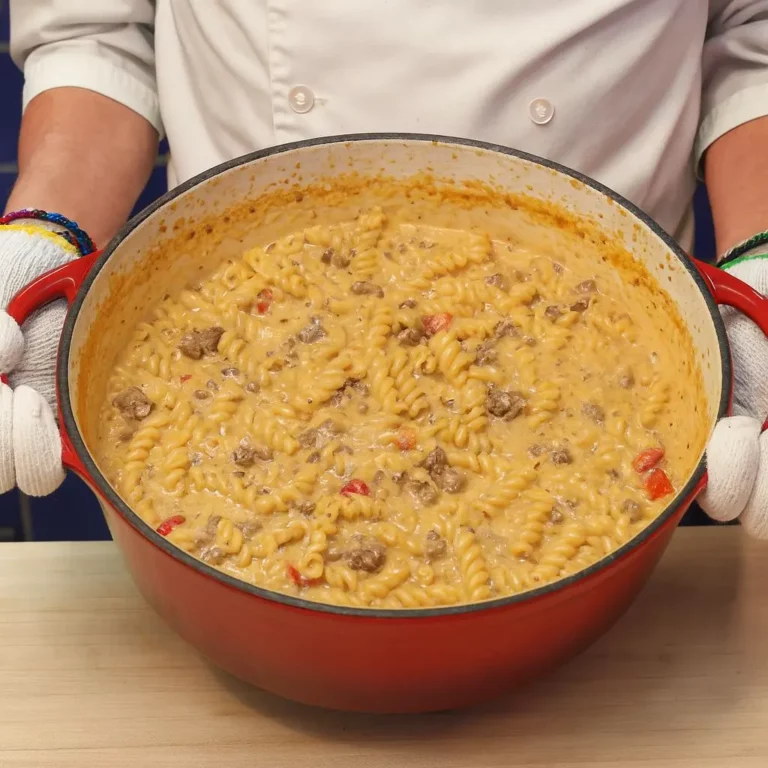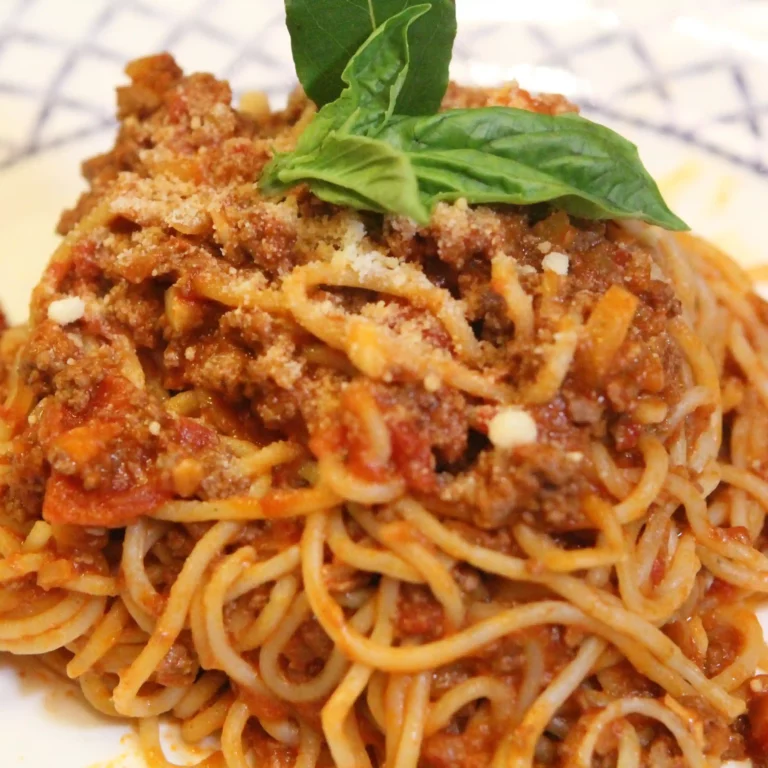Pan-Seared Duck Breast with Dijon Mustard Cream (Magret de Canard)
Looking for an impressive holiday main dish that’s actually weeknight-manageable? This pan-seared duck breast with Dijon mustard cream sauce delivers a restaurant-style plate in under an hour. The method is classic French: score and render the duck skin until crisp, finish briefly in the oven for a rosy center, then build a quick pan sauce with shallots, armagnac, white wine, duck demi-glace, and cream. Paired with roasted rainbow carrots, tomatoes on the vine, and baby potatoes, it’s a festive showstopper perfect for Christmas dinner or a cozy winter meal in Canada or the USA.
Adapted from my YouTube video — Use the video as a visual guide, and follow these written steps for spot-on timing.
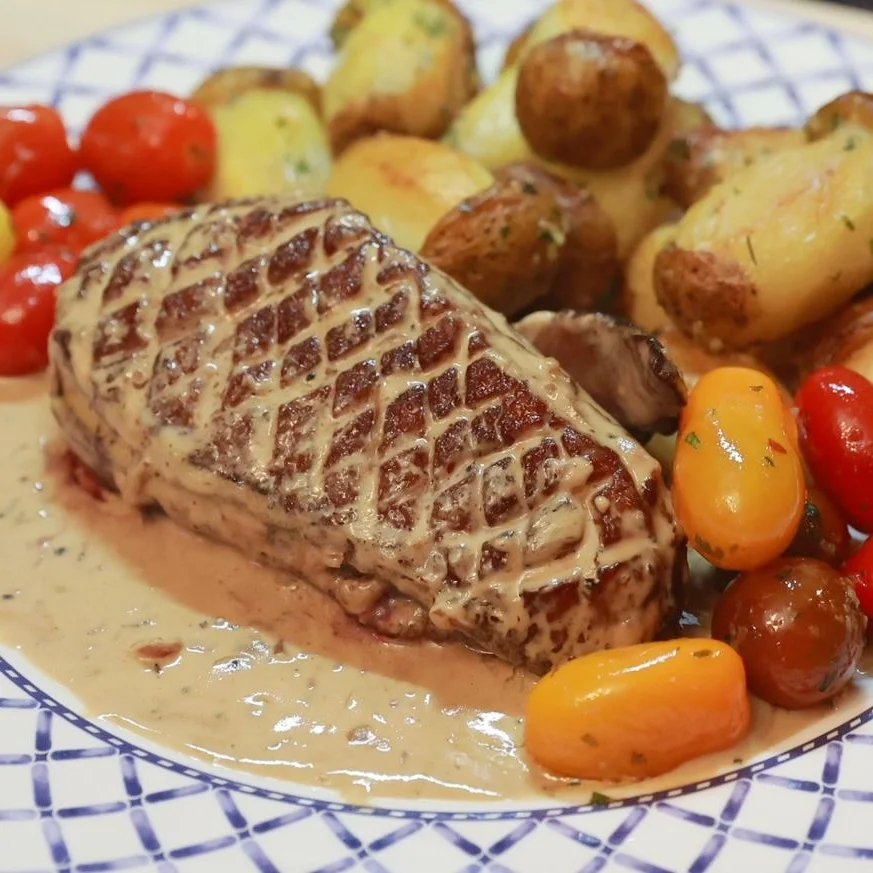
Why You’ll Love This Duck Recipe
- Crispy skin, juicy center. The scoring and high-heat render give you shatteringly crisp fat with tender meat.
- Punchy, silky sauce. The Dijon, reduction, and a touch of cream create a glossy sauce that coats every slice.
- Holiday-worthy sides, minimal fuss. Everything roasts while you sear and make the sauce.
- Make-ahead friendly elements. Duck fat and demi-glace freeze beautifully; the technique scales for 4–6 servings.

Ingredients (Serves 2–3)
Duck
- 2 duck breasts (magrets), 350–400 g each
- 1 tsp kosher salt (divided), ½ tsp freshly ground black pepper
Mustard Cream Sauce
- 2 shallots, finely minced
- 30 ml armagnac or cognac (2 tbsp) for flambé
- 150 ml dry white wine (about ⅔ cup)
- 150 ml duck demi-glace, thawed (about ⅔ cup)
- 1–2 tbsp Dijon mustard (start with 1 tbsp; add more to taste)
- 125–150 ml heavy cream 35% (½–⅔ cup), to desired richness
- Pinch of salt and pepper, to taste
Roasted Vegetables
- 400 g rainbow carrots, scrubbed and cut into bite-size chunks (about 3 cups)
- 400 g small potatoes (blue or baby/yellow), halved if large (about 3 cups)
- 200 g cherry tomatoes on the vine (about 1½ cups)
- 2–3 garlic cloves, lightly crushed
- 2–3 tbsp duck fat (or olive oil)
- Salt and pepper
- 1–2 tbsp chopped parsley, for finishing
Equipment: heavy skillet (stainless or cast iron), rimmed sheet pan, wire rack, instant-read thermometer (recommended).
Step-by-Step Instructions
1) Roast the Vegetables (start first)
- Preheat oven to 200 °C / 400 °F. Line a sheet pan; set a rack in the lower-middle.
- Toss carrots and potatoes with duck fat (or olive oil), salt, and pepper. Spread in a single layer.
- Roast 20 minutes. Add garlic and tomatoes, toss briefly, and roast 10 minutes more, until potatoes are tender and edges are golden (total ~30 minutes).
- Hold warm; finish with parsley before serving.
Tip: Keeping tomatoes on the vine helps them roast without bursting too early and adds a beautiful look on the plate.
2) Prep and Sear the Magrets
- Pat duck breasts very dry. With a sharp knife, lightly score the skin in a crosshatch pattern, taking care not to cut into the meat.

- Season all over with about ¾ tsp salt and ¼ tsp pepper (reserve the rest for finishing).
- Place the duck skin-side down in a cold heavy skillet. Set heat to medium-high. As the pan heats, the fat renders gradually — this is key for ultra-crisp skin.
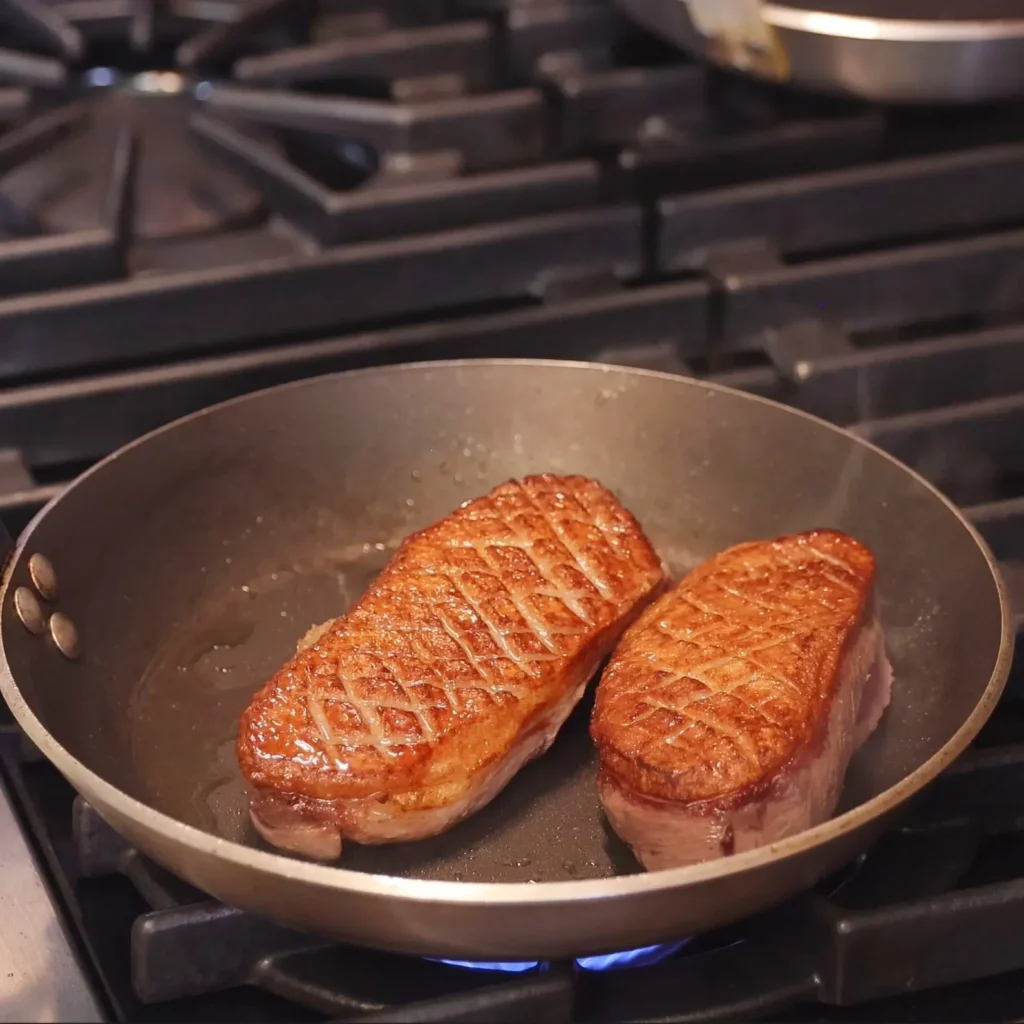
- Cook 7–9 minutes skin-side down, spooning off excess fat into a heatproof cup as needed (save it!). Rotate the breasts occasionally for even color.
- Flip and cook 1–2 minutes on the flesh side to lightly color.
Timing note: If your range runs very hot, sear a bit shorter. Target deep golden-brown, well-rendered skin and about 54–55 °C / 130 °F internal after the oven finish for rosy.
3) Brief Oven Finish
- Transfer the seared duck to a wire rack set on a small sheet pan, skin-side up.
- Roast at 200 °C / 400 °F for 5–7 minutes (about 6 minutes for 350 g breasts) to reach 52–55 °C / 125–130 °F internal (rosy/medium-rare).
- Rest 5–8 minutes before slicing. Sprinkle remaining salt and a touch of pepper.
4) Make the Dijon Mustard Cream Sauce
- Discard all but 1 tbsp duck fat from the skillet; set over medium heat.
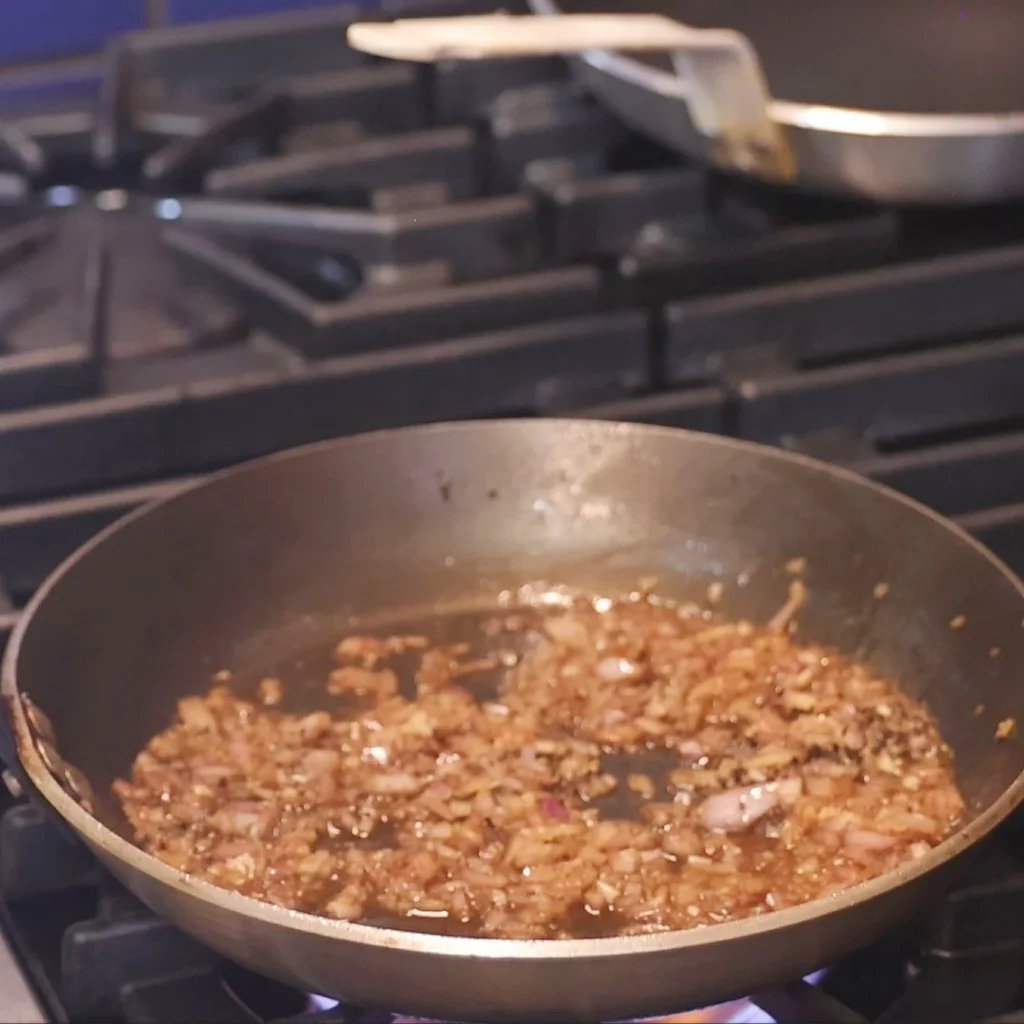
- Add shallots; sauté 1–2 minutes until translucent.
- Off heat, add armagnac and flambé (or simmer 30 seconds if not flaming).
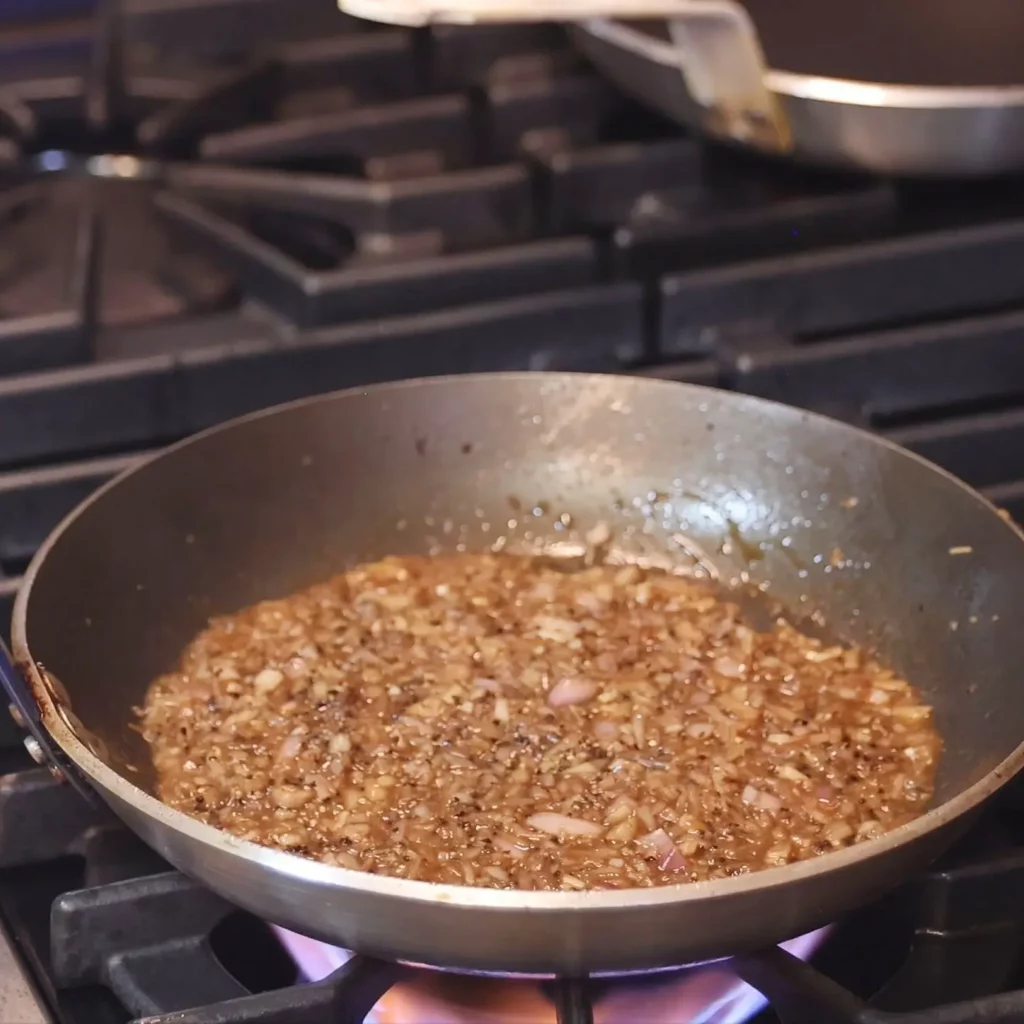
- Add white wine; reduce by about half.
- Add duck demi-glace; reduce to a syrupy glaze that coats the spoon (this reduction is the secret).
- Whisk in 1 tbsp Dijon and 125 ml cream; simmer gently 1–2 minutes until glossy. Adjust with a splash more cream for silkiness or a bit more mustard for bite.
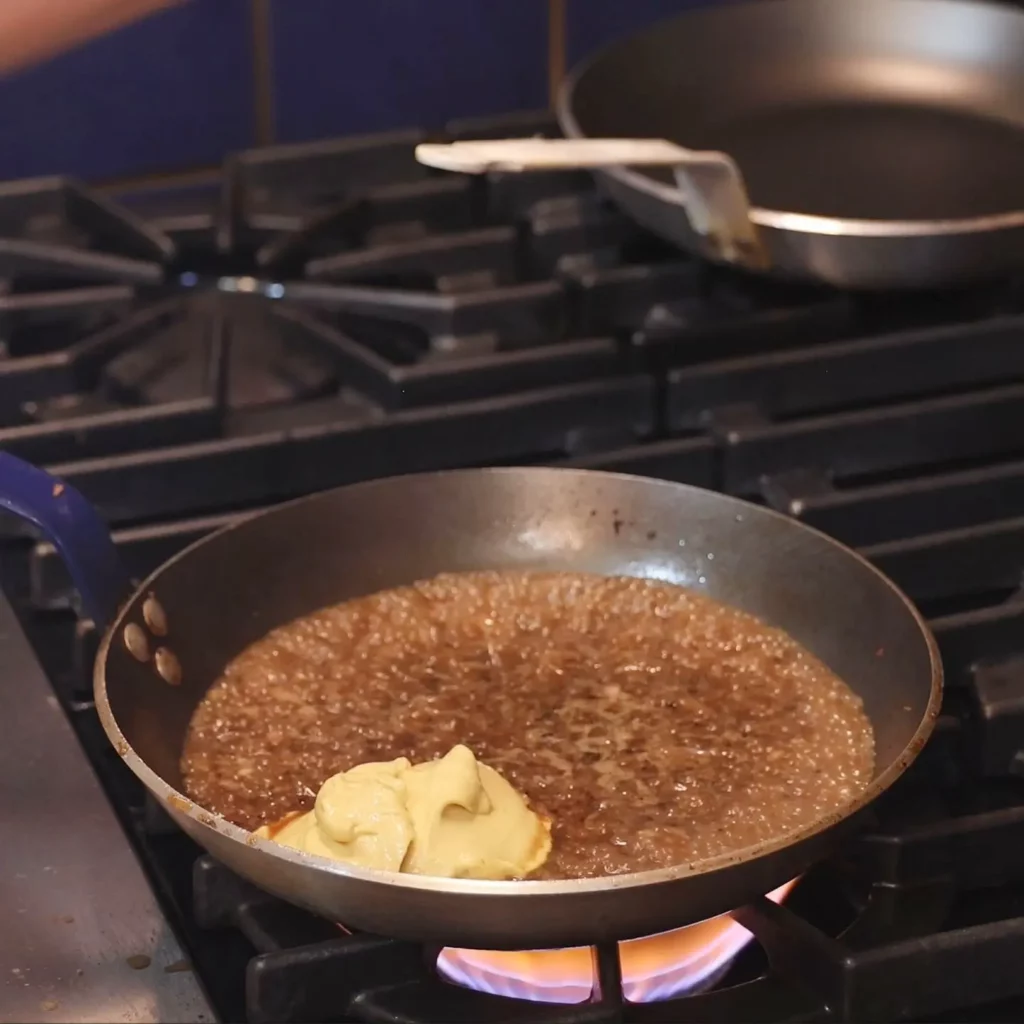
- Season to taste. Keep warm on the lowest heat.
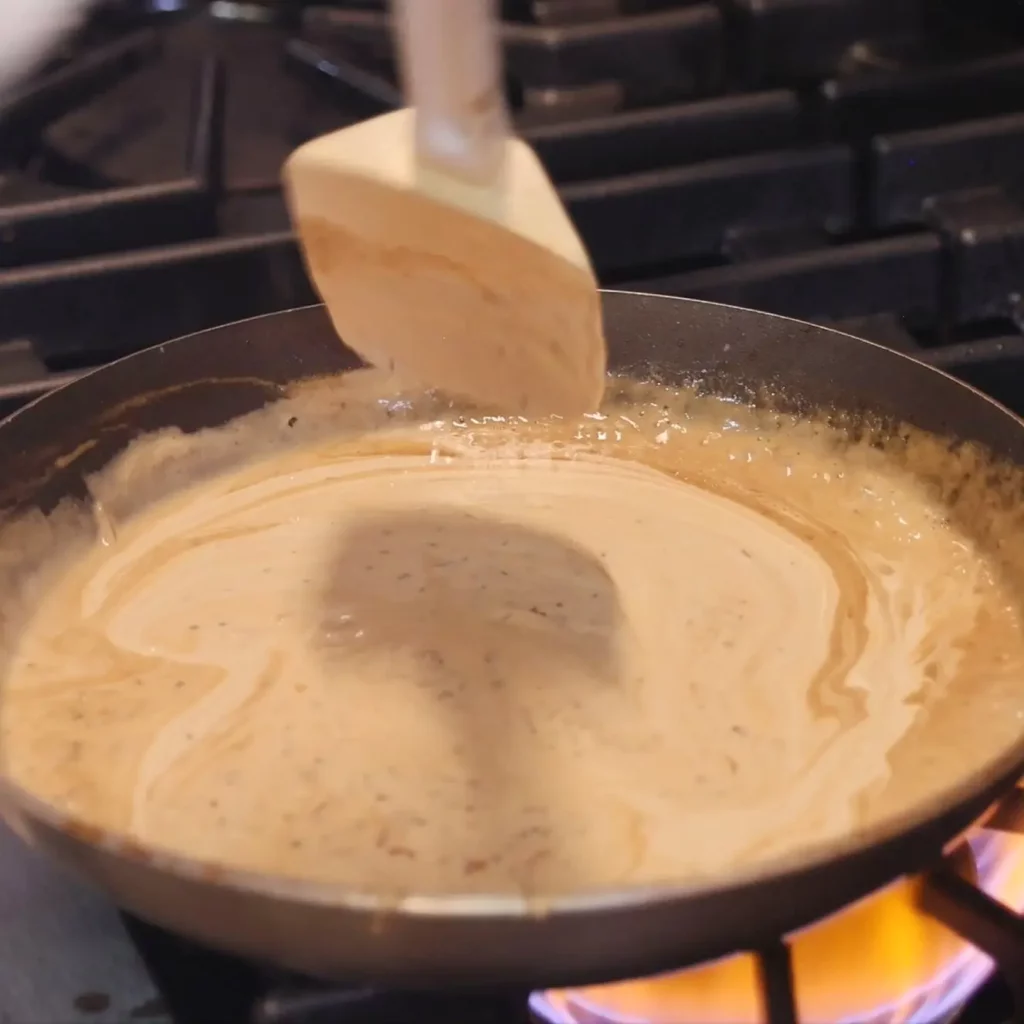
Sauce texture goal: nappe (coats the back of a spoon). If it gets too thick, loosen with a spoon of water, stock, or cream.
5) Slice and Plate
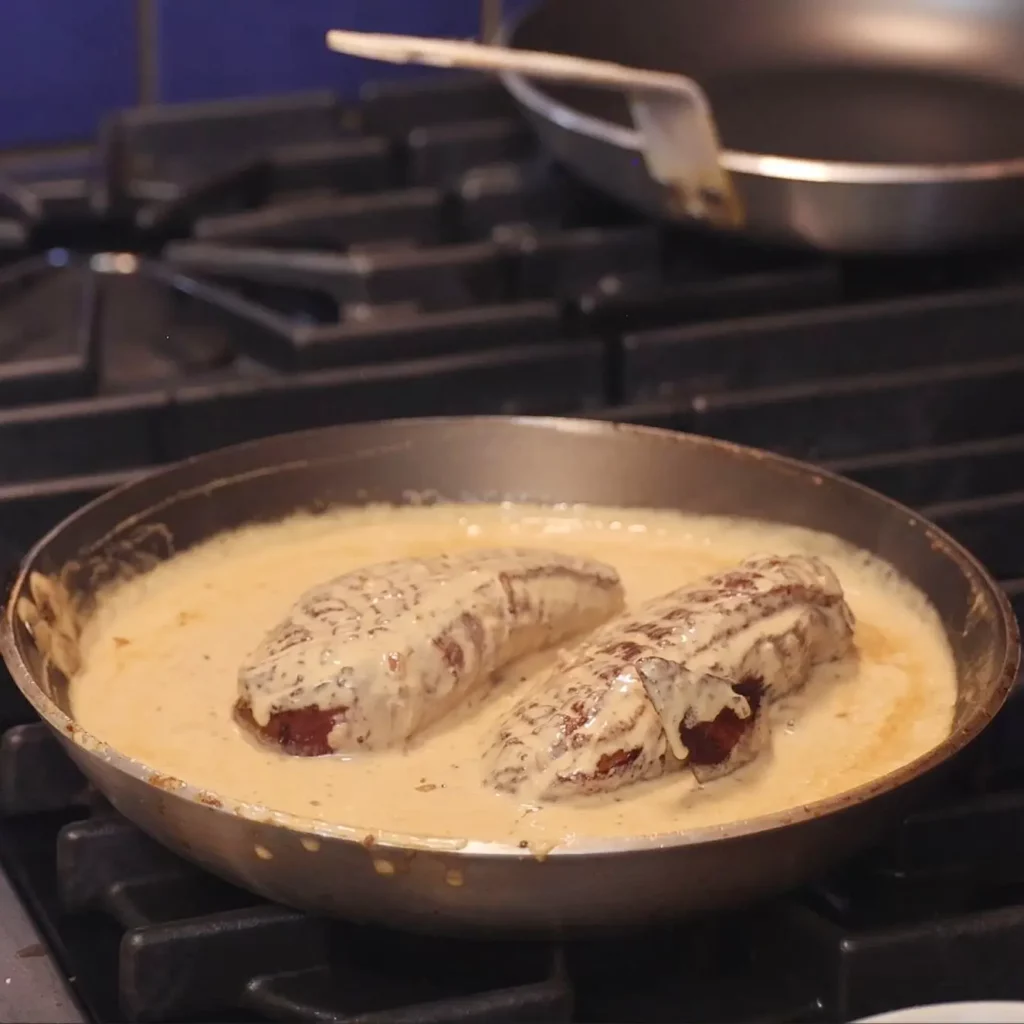
- Slice duck on the bias into 1 cm (⅜ in) slices, showing the rosy center.
- Arrange on warm plates with carrots, potatoes, and vine tomatoes.
- Spoon mustard cream over the duck and around the plate. Serve immediately.
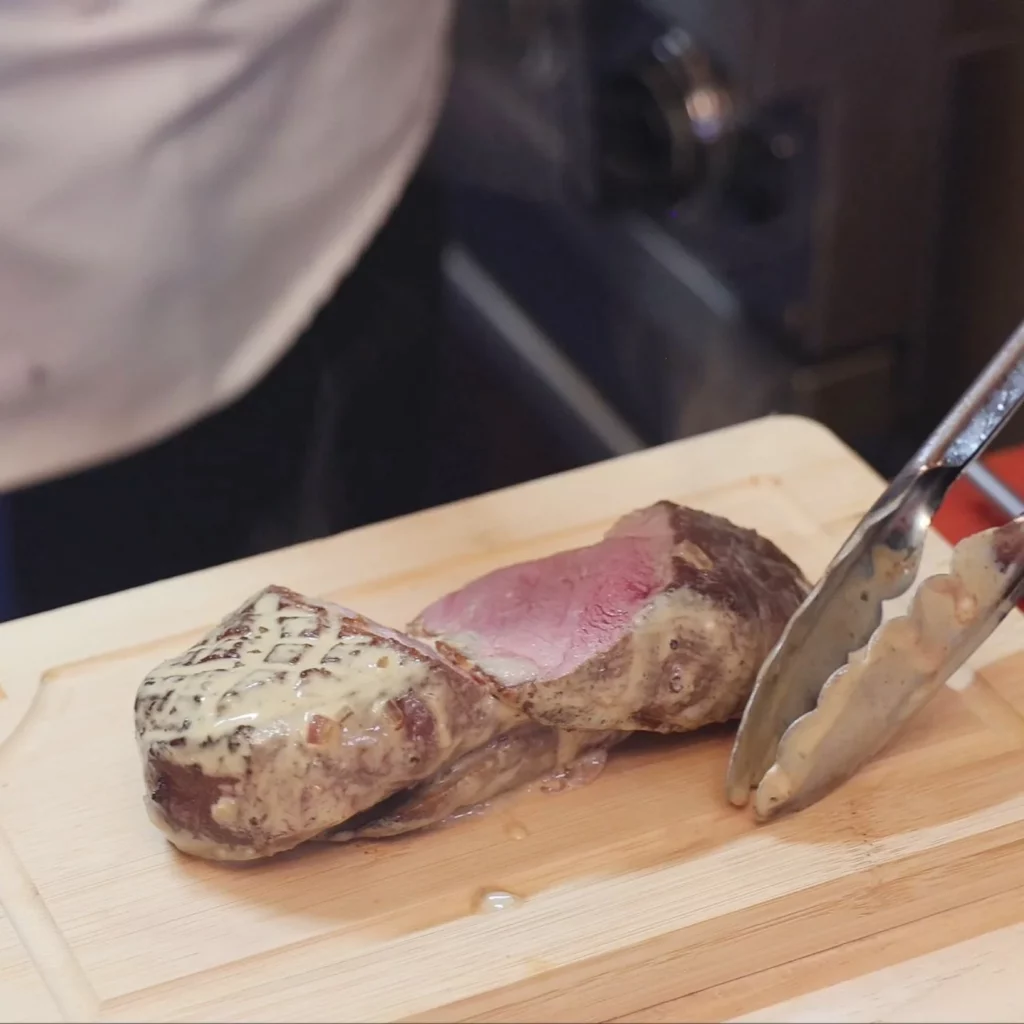
Chef Tips and Make-Ahead
- Render patiently. Start in a cold pan to render more fat and avoid smoky splatter.
- Thermometer = perfect doneness. Pull at 52–55 °C (125–130 °F) for rosy; residual heat rises a couple of degrees while resting.
- Demi-glace matters. It gives depth. If you need a fast thickener for pan sauces, you can keep a little beurre manié on hand.
- Save duck fat. It’s liquid gold for Parisian potatoes or authentic Belgian fries.
- Scaling up. Sear in batches, finish all duck on a rack in the oven, and hold vegetables on low heat.

Substitutions and Variations
- No armagnac? Use cognac, brandy, or skip the flambé and add a teaspoon of sherry vinegar at the end for brightness.
- No duck demi-glace? Use high-quality chicken stock reduced by half; balance with a touch more mustard.
- Cream options. 35% yields a silky finish; half-and-half works but reduce the sauce a bit more first to avoid thinning the flavor.
- Mustard profile. Swap some Dijon for whole-grain mustard for texture, or add ½ tsp mild honey if you like a hint of sweetness.
- Sides. Roast sweet potatoes or Pommes Parisiennes in duck fat; add a bright salad like Homemade Caesar or Greek pasta salad.
What to Serve With Duck
- A simple starter like Homemade Hollandaise on roasted asparagus.
- A rich sauce alternative for steak night: Creamy Mushroom Sauce.
- For poultry inspiration, see Mustard Chicken or Creamy Roquefort Sauce.
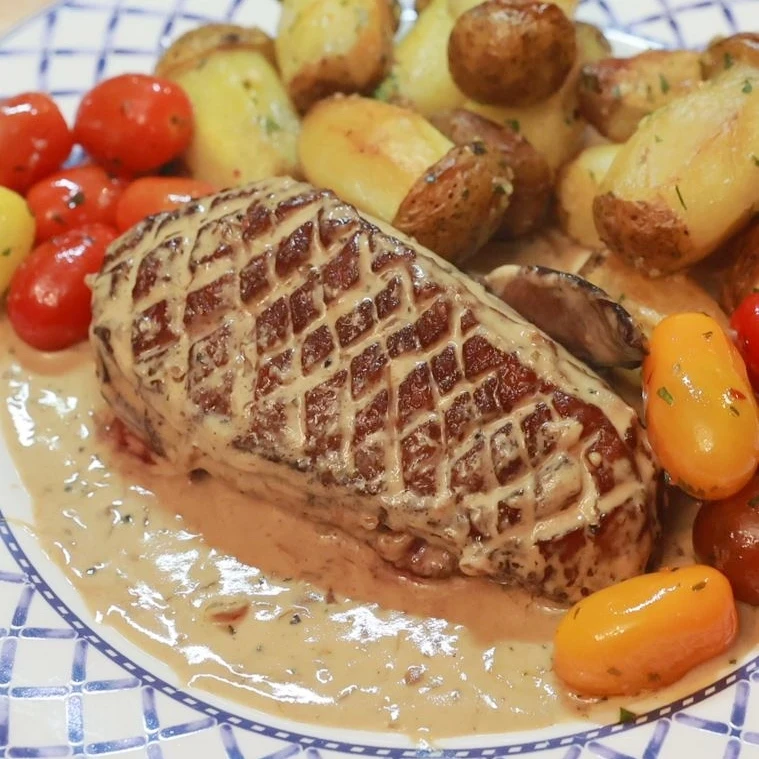
FAQ
Can I cook duck breasts fully on the stovetop?
Yes. After rendering skin-side down 7–9 minutes, flip and cook 3–5 minutes, basting with fat, until 52–55 °C. The oven finish is more consistent for multiple breasts.
My sauce is too thick — help!
Whisk in a tablespoon of water, stock, or cream to loosen. If it’s too thin, simmer to reduce further or whisk in a pea-sized knob of beurre manié off heat.
What wine pairs well with duck?
Medium-bodied reds like Pinot Noir, Gamay, or a southern French blend. For white, try a richer Chardonnay to stand up to the cream.
Can I use chicken breasts instead?
Different protein, different timing. If you want chicken in a similar flavor family, try Creamy Mustard Chicken with Mushrooms.
How do I store leftovers?
Refrigerate sliced duck and sauce separately up to 3 days. Rewarm gently (low heat) to avoid overcooking the meat.

Pan-Seared Duck Breast with Dijon Mustard Cream (Magret de Canard)
Ingredients
Duck
- 2 duck breasts magrets, 350–400 g each
- 1 tsp kosher salt divided, ½ tsp freshly ground black pepper
Mustard Cream Sauce
- 2 shallots finely minced
- 30 ml armagnac or cognac 2 tbsp for flambé
- 150 ml dry white wine about ⅔ cup
- 150 ml duck demi-glace thawed (about ⅔ cup)
- 1 –2 tbsp Dijon mustard start with 1 tbsp; add more to taste
- 125 –150 ml heavy cream 35% ½–⅔ cup, to desired richness
- Pinch of salt and pepper to taste
Roasted Vegetables
- 400 g rainbow carrots scrubbed and cut into bite-size chunks (about 3 cups)
- 400 g small potatoes blue or baby/yellow, halved if large (about 3 cups)
- 200 g cherry tomatoes on the vine about 1½ cups
- 2 –3 garlic cloves lightly crushed
- 2 –3 tbsp duck fat or olive oil
- Salt and pepper
- 1 –2 tbsp chopped parsley for finishing
Instructions
Roast the Vegetables (start first)
- Preheat oven to 200 °C / 400 °F. Line a sheet pan; set a rack in the lower-middle.
- Toss carrots and potatoes with duck fat (or olive oil), salt, and pepper. Spread in a single layer.
- Roast 20 minutes. Add garlic and tomatoes, toss briefly, and roast 10 minutes more, until potatoes are tender and edges are golden (total ~30 minutes).
- Hold warm; finish with parsley before serving.
- Tip: Keeping tomatoes on the vine helps them roast without bursting too early and adds a beautiful look on the plate.
Prep and Sear the Magrets
- Pat duck breasts very dry. With a sharp knife, lightly score the skin in a crosshatch pattern, taking care not to cut into the meat.
- Season all over with about ¾ tsp salt and ¼ tsp pepper (reserve the rest for finishing).
- Place the duck skin-side down in a cold heavy skillet. Set heat to medium-high. As the pan heats, the fat renders gradually — this is key for ultra-crisp skin.
- Cook 7–9 minutes skin-side down, spooning off excess fat into a heatproof cup as needed (save it!). Rotate the breasts occasionally for even color.
- Flip and cook 1–2 minutes on the flesh side to lightly color.
- Timing note: If your range runs very hot, sear a bit shorter. Target deep golden-brown, well-rendered skin and about 54–55 °C / 130 °F internal after the oven finish for rosy.
Brief Oven Finish
- Transfer the seared duck to a wire rack set on a small sheet pan, skin-side up.
- Roast at 200 °C / 400 °F for 5–7 minutes (about 6 minutes for 350 g breasts) to reach 52–55 °C / 125–130 °F internal (rosy/medium-rare).
- Rest 5–8 minutes before slicing. Sprinkle remaining salt and a touch of pepper.
Make the Dijon Mustard Cream Sauce
- Discard all but 1 tbsp duck fat from the skillet; set over medium heat.
- Add shallots; sauté 1–2 minutes until translucent.
- Off heat, add armagnac and flambé (or simmer 30 seconds if not flaming).
- Add white wine; reduce by about half.
- Add duck demi-glace; reduce to a syrupy glaze that coats the spoon (this reduction is the secret).
- Whisk in 1 tbsp Dijon and 125 ml cream; simmer gently 1–2 minutes until glossy. Adjust with a splash more cream for silkiness or a bit more mustard for bite.
- Season to taste. Keep warm on the lowest heat.
- Sauce texture goal: nappe (coats the back of a spoon). If it gets too thick, loosen with a spoon of water, stock, or cream.
Slice and Plate
- Slice duck on the bias into 1 cm (⅜ in) slices, showing the rosy center.
- Arrange on warm plates with carrots, potatoes, and vine tomatoes.
- Spoon mustard cream over the duck and around the plate. Serve immediately.
Video
Notes
FAQ
Can I cook duck breasts fully on the stovetop?Yes. After rendering skin-side down 7–9 minutes, flip and cook 3–5 minutes, basting with fat, until 52–55 °C. The oven finish is more consistent for multiple breasts. My sauce is too thick — help!
Whisk in a tablespoon of water, stock, or cream to loosen. If it’s too thin, simmer to reduce further or whisk in a pea-sized knob of beurre manié off heat. What wine pairs well with duck?
Medium-bodied reds like Pinot Noir, Gamay, or a southern French blend. For white, try a richer Chardonnay to stand up to the cream. Can I use chicken breasts instead?
Different protein, different timing. If you want chicken in a similar flavor family, try Creamy Mustard Chicken with Mushrooms. How do I store leftovers?
Refrigerate sliced duck and sauce separately up to 3 days. Rewarm gently (low heat) to avoid overcooking the meat.
Useful Links
🛒 Michel Dumas Shop : Explore our kitchen essentials, including aprons and knives.
🌐 Linktree : Access all our important links in one place.
📱 YouTube | Instagram | Facebook | TikTok : Follow us for the latest recipes and culinary tips.
